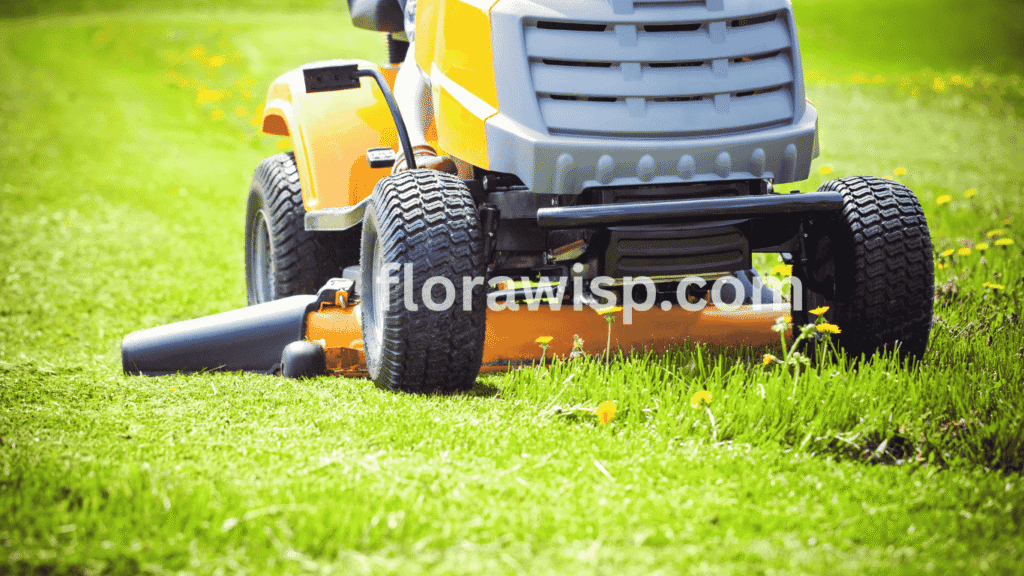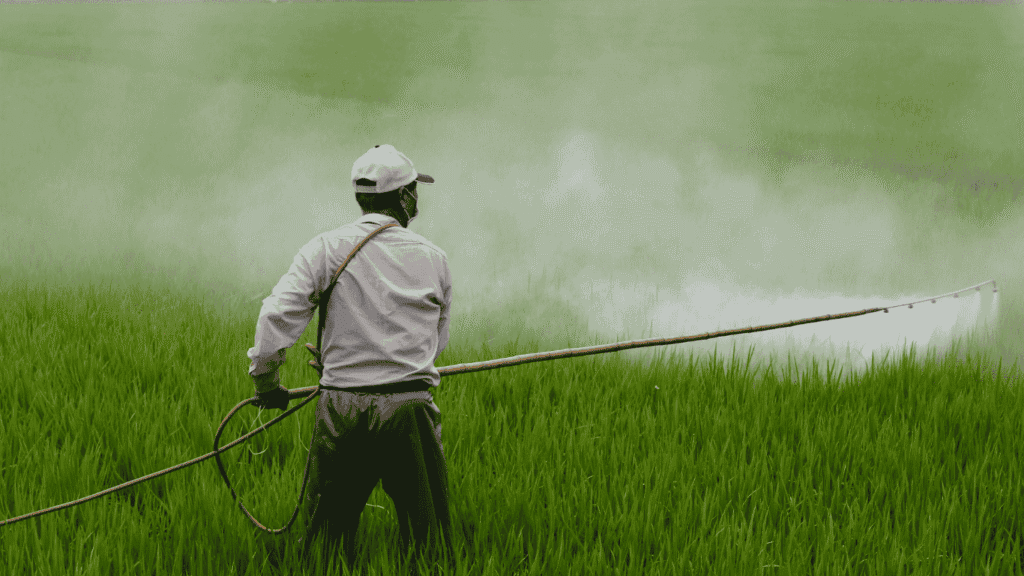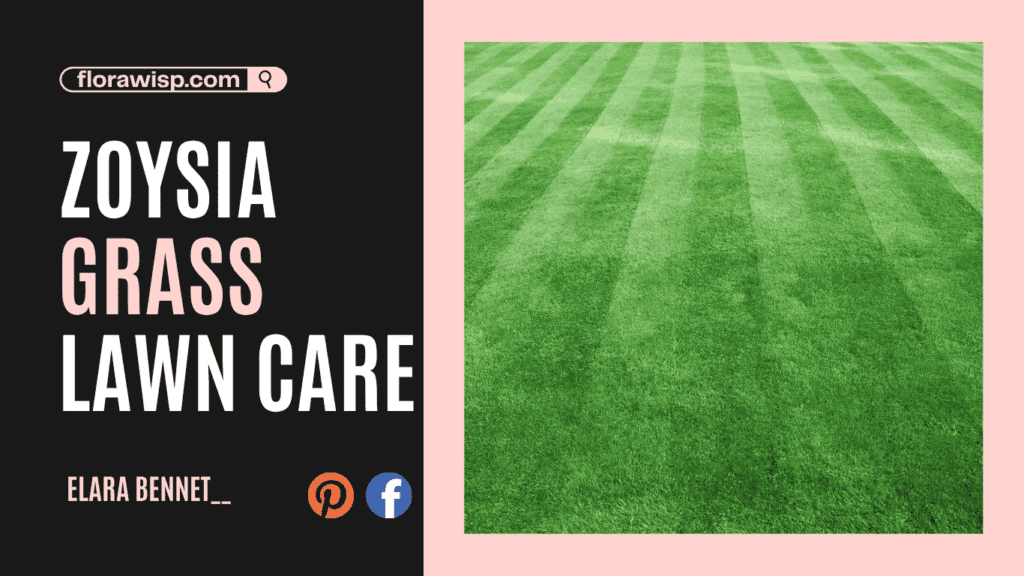Discover how to care for a Zoysia grass lawn with expert tips and real-life comparisons to Bermuda, Centipede, Fescue & St. Augustine lawns. A well-maintained Zoysia grass lawn is more than just a patch of green; it’s a durable, dense turf that thrives with the right care and smart planning. Over the years, I’ve helped countless homeowners manage everything from tricky weed outbreaks to winter dormancy and confusing fertilizer schedules. If you’re specifically wondering about how to grow and maintain Zoysia grass in Texas, check out my detailed guide on Zoysia Grass in Texas. However, beyond maintenance, choosing Zoysia also raises questions: How does it truly compare to Centipede, Bermuda, Fescue, or St. Augustine?
In This Article
Whether you’re troubleshooting brown spots, curious about mowing height, or debating grass types, this guide brings together advanced care strategies and honest comparisons. Let’s dig into what makes Zoysia a standout choice and when it might not be.
Zoysia Grass Lawn Care That Works

Zoysia grass lawns thrive when given the right balance of attention and restraint. Based on years of hands-on experience maintaining warm-season lawns across the Southeast, I’ve learned that consistency matters more than complexity.
Beyond the usual mowing and watering, advanced care begins with understanding soil health and microbial activity. I recommend conducting a soil test every spring. A client of mine in Georgia discovered a severe magnesium deficiency that was silently stunting turf growth. With proper amendments, the lawn rebounded in less than a month.
Topdressing with compost once a year can significantly improve root structure, water retention, and microbial balance. This is especially helpful for compacted soils or after heavy foot traffic. In my yard, a yearly compost application has cut back on the need for synthetic fertilizers altogether.
Dethatching and core aeration are game changers. Zoysia is prone to thatch buildup, especially if over-fertilized. I’ve seen lawns smothered under an inch of thatch bounce back with one session of core aeration and a gentle compost layer.
Also, don’t ignore biostimulants like humic acid or seaweed extract. These can enhance nutrient uptake and overall turf vigor without pushing excessive growth.
If you’re working with sandy soils or hot, humid weather, my guide on Zoysia grass in Florida covers regional tips that can make a real difference.
Pro Tip: Rotate mowing patterns each session to prevent soil compaction and encourage upright blade growth. It’s a small habit that yields long-term benefits.
Controlling Weeds OF Your Zoysia Grass Lawn

Zoysia grass lawn naturally chokes out some weeds thanks to its dense growth pattern, but it still needs help, especially in transition zones.
To manage weeds effectively:
- Apply a pre-emergent herbicide in early spring and again in early fall.
- Hand-pull broadleaf weeds like clover and dandelion before they flower.
- Avoid post-emergent sprays during peak heat zoysia can get stressed.
One summer, I skipped the spring pre-emergent and ended up battling goosegrass the whole season. Lesson learned: prevention wins over cure.
Tip: Use a product safe for zoysia, such as atrazine or a blend labeled for warm-season grasses.
Zoysia Grass Lawn Fertilization & Mowing
Zoysia grass lawn requires less fertilizer than Bermuda or St. Augustine, but timing and formulation are key.
- Fertilize once or twice per growing season with a slow-release, balanced product (like 15-0-15).
- Avoid high-nitrogen blends; they cause thatch and encourage disease.
- Maintain your mowing height based on the type Empire, for example, does best around 2 inches.
Case Insight: A homeowner I advised switched from a 30-0-10 high-nitrogen fertilizer which pushed fast but weak top growth to a balanced slow-release blend (15-0-15). The change resulted in better turf color, reduced thatch, and stronger root development within a month.
Mowing Insight: Never cut more than 1/3 of the grass blade in one mowing session. This prevents stress and brown tips.
Winter Survival Guide for Your Zoysia Lawn

As winter sets in, Zoysia grass lawn naturally enters dormancy, taking on a straw-like brown color. It’s not dead just conserving energy. While this seasonal change is completely normal, there are key steps that can help your lawn bounce back greener and healthier when spring returns.
- Don’t fertilize past August. Feeding too late in the season can force new growth that’s vulnerable to frost damage. I’ve seen lawns in North Carolina struggle with patchy recovery after late-season nitrogen was applied.
- Limit foot traffic on frozen turf. Zoysia’s dormant blades are brittle and prone to breakage. Compacted soil during winter can slow root oxygenation, delaying spring recovery. A homeowner I worked with in Birmingham noticed an uneven green-up where kids frequently played during winter.
- Rake leaves to prevent fungal issues. A thick blanket of wet leaves traps moisture and creates a breeding ground for diseases like Rhizoctonia (brown patch). Regular cleanup improves airflow and reduces overwintering pathogens.
If your Zoysia grass lawn remains brown well into mid-spring, you may be dealing with more than just dormancy. Brown patch disease, often triggered by wet, mild winters, can mimic dormancy and delay green-up. Check for circular patches and water-soaked lesions at the base of the blades.
Personal Note: Each fall, I apply a potassium-rich granular blend (0-0-50) meaning it contains 0% nitrogen, 0% phosphorus, and 50% potassium to reinforce root strength and cellular resilience. This targeted boost helps my lawn survive harsh winters and bounce back greener come spring.
Empire Zoysia

Empire zoysia is a popular cultivar known for its thick texture and deep green hue. It’s tough under foot traffic and requires less mowing but it’s not flawless.
Pros:
- Grows well in sandy or loamy soil.
- Maintains color longer into fall than most varieties.
Cons:
- Prone to chinch bug infestations.
- Builds thatch quickly if overwatered.
Client Case: One lawn I serviced in Pensacola had Empire zoysia. After two years of bi-weekly mowing and compost topdressing, it was the lushest lawn on the street.
Zoysia Grass vs. Other Popular Lawns
Zoysia Grass vs. Centipede Grass
- Zoysia handles foot traffic and drought better.
- Centipede needs less mowing but is more sensitive to high pH soils.
Verdict: Choose zoysia for family yards; centipede for low-maintenance setups.
Zoysia Grass vs. Fescue
- Fescue thrives in cooler regions; zoysia excels in warm, humid zones.
- Zoysia goes dormant in winter; fescue stays green year-round.
Verdict: Fescue is best for shade and year-round color; zoysia wins in heat resilience.
Zoysia Grass vs. Bermuda Grass
- Bermuda grows faster and needs more mowing.
- Zoysia has finer texture and better shade tolerance.
Verdict: Choose Bermuda for sports fields; zoysia for suburban lawns.
Zoysia Grass vs. St. Augustine
- St. Augustine handles shade better.
- Zoysia is more drought-tolerant and builds fewer thatch layers.
Verdict: For shady, humid lawns, St. Augustine wins. For sun and minimal upkeep, go zoysia.
FAQs
Q. How do you care for Zoysia grass in Texas?
To care for Zoysia grass in Texas, water deeply once a week, mow at 2 inches, and stop fertilizing by mid-August.
Texas lawns face intense summer heat and drought, so mulching grass clippings helps retain moisture and shade the soil. I also overseed thin spots in early spring using Empire Zoysia plugs. This simple step helped one of my Dallas clients achieve a fully covered lawn by July. Avoid heavy foot traffic during heatwaves and monitor for chinch bugs, which can mimic drought damage.
Q. What’s the right way to plant Zoysia grass plugs?
Plant Zoysia plugs 6–12 inches apart in soft, moist soil, and water daily until rooted typically within 3 to 4 weeks.
Late spring or early summer works best to establish strong root systems before high heat. I often apply a thin layer of compost or peat moss after plugging, which improves moisture retention and speeds up rooting. In one Georgia project, this technique doubled plug coverage within six weeks compared to bare-soil planting.
Q. Do armyworms attack Zoysia grass?
Yes, armyworms can infest Zoysia grass, especially in late summer, causing sudden brown patches.
They often hide in the thatch and feed overnight. If your lawn browns quickly despite regular watering, inspect closely for small green or striped caterpillars. I’ve seen lawns recover within two weeks using spinosad sprays and early detection. Keeping grass mowed slightly higher also helps minimize egg-laying sites.
Q. How much sun does Zoysia grass need to thrive?
Zoysia grass needs at least 6 hours of direct sunlight daily to thrive.
While cultivars like Zeon Zoysia can tolerate some shade, most types prefer full sun for thick, lush growth. In shaded areas of my own yard, Zoysia thinned significantly, despite regular care. I recommend thinning overhanging trees and spacing outdoor furniture to allow more sunlight exposure.
Q. Can Zoysia and Bermuda grass grow together?
Yes, but Bermuda grass tends to dominate unless you manage it carefully.
Zoysia grows slower and less aggressively than Bermuda, making it vulnerable to takeover. I’ve maintained mixed lawns by weekly edge trimming and spot-treating Bermuda runners. Mowing at Zoysia’s ideal height (2–2.5 inches) also helps preserve its density without encouraging Bermuda’s spread.
Q. How much water does Zoysia grass need weekly?
Zoysia grass lawn requires about 1 inch of water per week, including rainfall.
During dormancy, watering should be reduced significantly. I personally use a rain gauge to avoid overwatering, especially in humid conditions where excess moisture can lead to fungal issues. Deep, infrequent watering encourages root depth and resilience during dry spells.
Q. When should I aerate my Zoysia lawn?
Aerate Zoysia grass in late spring or early summer when it’s actively growing.
This allows the grass to recover quickly and promotes deeper root development. I recommend aerating just before expected rain to help nutrients penetrate the soil. A client in Alabama saw fewer brown patches and faster green-up the following season after switching to this timing.
Final Thoughts
Zoysia grass lawn isn’t a plug-and-play lawn solution; it takes a measured, knowledgeable approach. But once established, it offers a beautiful, durable, and low-maintenance turf that stands the test of time.
From a gardener’s perspective, it’s been one of the most rewarding grasses to manage. I’ve seen zoysia transform patchy front yards into neighborhood showpieces, simply through thoughtful care and patience.
If you’re seeking a balance between visual appeal and practicality, a well-managed zoysia lawn just might be your best bet.
References
University of Georgia Extension – Zoysia Grass Lawns
Texas A&M AgriLife Extension – Zoysia grass Selection & Care Guide
North Carolina State University – Carolina Lawns
Gardener, M.Sc. Horticulture
Elara Bennet is a gardening writer from Austin, TX, passionate about sustainable lawns and blooms. Read full bio →








